As the local food movement gains traction across the nation, people are becoming more in tune with the soil and hands that produce their food. Equally important, however, is considering the wild, edible, native plants of a particular area which contains historical, environmental and nutritional significance. John Kallas, a wild food expert, teacher and nutritionist in Portland, OR, claims that wild greens are one reason why the Mediterranean diet has produced some of the healthiest people in the world — those with low rates of heart disease, dementia with old age and cancers. Kallas has reviewed the research on the nutritional content of wild greens concluding that they tend to be more nutritious than supermarket spinach and lettuce. Mustard garlic has the highest levels of nutrients of any leafy green ever analyzed, and is high in vitamin A, beta carotene, zinc, manganese and fiber.
In the past, there were seven main regions in the United States, each with correlating native plants. Native agriculture was most advanced in what is now the South, but signs were evident in all regions. Native Americans used farming techniques such as irrigation, terracing, crop rotation, and planting windbreaks to harvest enough crops to dry and store for the winter. While farming was an important source of food for Native Americans, gathered wild plants also accounted for a substantial amount of their meals.
Southwest
The Prickly Pear is a common native edible in the Southwest. Its leaves can be eaten at any time of the year. Another example is the Pinyon tree which offers a crop of nuts.
Pine nut crops are affected by spring runoff, elevation, soil conditions, and proximity to a water source. Pine needle tea is another use of the pine, and is very high in Vitamin C. This tea was used to treat scurvy by simmering a handful of diced, green needles in a cup of water for twenty minutes. The Yucca (Yucca baccata) has large fruits which can be collected when ripe in late summer and roasted on coals.
Desert Tortoise Botanicals, a company based in the Southwest town of Tuscon, AZ, provides access to local medicinal herbal preparations. The products are carefully handcrafted from ethically wildcrafted and organically grown herbs. Also located in Tuscon is Native Seeds/SEARCH, a non-profit focused on seed conservation. Since its founding, they have been dedicated to conserve the rich agro-biodiversity of the arid Southwest because of its genetic and cultural importance.
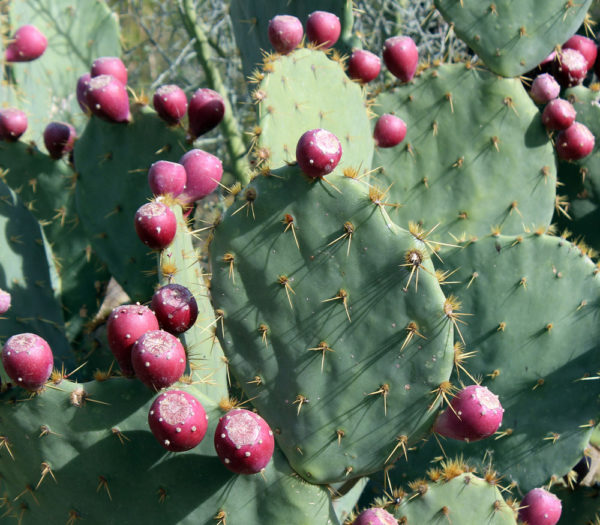
“What began as a humble operation with seeds stored in chest freezers has grown to a state-of-the art conservation facility, a host of innovative programs and educational initiatives, and an organization recognized as a leader in the heirloom seed movement,” says Joy Hought, research and education program manager at Native Seeds/SEARCH. The organization has nearly 2,000 varieties of rare or endangered arid lands seeds in their seed bank including corn, beans, squash, herbs, and fiber and dye plants. They promote the use of these ancient crops and their wild relatives by distributing seeds to traditional communities and gardeners worldwide. Hought stresses the importance of seed saving: “Local food, food security, food sovereignty, sustainable farming – none of these are possible without good seed. Good seed means seeds from varieties that provide high nutrition, that are adapted to the environments of sustainable systems, and that are ethically developed and produced. All of the incredible crop genetic diversity that we enjoyed a century ago was a product of individual gardeners and farmers saving seed, year after year. The simple act of seed saving is one of the quietest revolutionary actions we can each take to create the world we want.”
Southeast
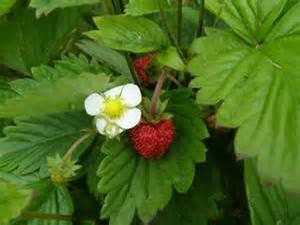
One of the more intriguing plants native to the Southeast is the Persimmon, also known as the Date plum. It is found in clearings, meadows, fields and dry woods or pine lands and has small yellow-orange to orange-red fruits which sometimes look like a miniature pumpkin. As they mature their bark becomes dark and breaks up “into square scaly thick plates, reminiscent of charcoal briquettes,” according to the Virginia Tech Forestry Department. The fruit can be eaten dry, cooked or raw, and are quite sweet due to high glucose content, though they are not as tasty before they are properly ripe. Many suggest waiting until after the first frost to pick persimmons, and many also advise avoiding the skin entirely.
The fruits are small, ranging from a half inch to an inch and a half in diameter, and grow in trailing vines and produce small white flowers with five rounded petals. Arrowhead, Sagitraria latifolia, is found among canals and shallow water. According to the Rocky Mountain Wild Foods Cookbook, Lewis and Clark recorded eating Arrowhead during their journeys in the 1800s. To harvest, one usually wades in shallow water for the arrow-shaped leaves and pulls up the tuber of the plant which resembles a potato. It can be used as a potato, as well, and can be peeled, roasted or diced. Wild onion, Allium Canadense, is closely related to wild garlic. It is good for immune system support. Wild onion is often found in meadows, fields, moist or shady woods and thickets. Its leaves are long, flat, and grassy looking. It can grow two feet tall with pink or white flowers at the end, which turn into the bulbs. These are best gathered in early spring, and used to cook with or made into pickled onions. The American Elderberry (Sambucus nigra ssp. canadensis) is a common, widespread shrub with clusters of white flowers and many small black or purple berries. Elderberries, inedible when fresh and raw, are used instead for making jelly, preserves, pies and wine.
Mid-Atlantic
Pawpaws (Asimina triloba) were enjoyed by Native Americans and early settlers in this region. With enough sun, trees can grow up to 40 feet, though most are the size of shrubs between 8-20 feet tall. The fruit, which resembles a stubby banana and grows in a cluster, is also called custard apple. It’s yellowish-green until late fall, which it matures and darkens to nearly black. This is when the fruit should be picked. Pawpaws are rich in vitamins A and C. Wild Asparagus (Asparagus officinalis) is a tough perennial that withstands poor sandy soils and was introduced in the United States by early settlers. It flowers in May to mid-June on long feathery stems, but should be harvested before that stage. In early spring the tender thin shoots between 6 and 12 inches tall can be harvested. Prickly Pear and Persimmon, both previously described as native to the Southeast, can also be found in the Mid-Atlantic region.
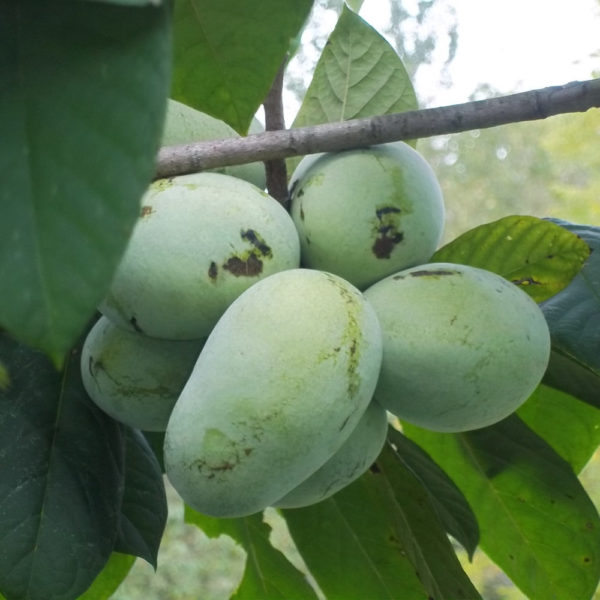
Mid-West
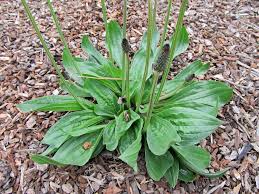 (Plantago major) grows in disturbed areas and is an easy edible and medicinal plant to identify. Plantain works as an antibiotic for cuts and is best eaten when the leaves are small in the spring. As the growing season progresses the leaves become bitter and the noticeable “veins” on the plant’s leaves become stringy. Common Yarrow (Achillea millefolium L.) is found in yards and fields. The leaves can be used as a coagulant, and the flowers and leaves in teas as a diuretic. For stopping the flow of blood, yarrow can also be useful by crushing up the leaves and placing them over the cut. Several types of “prickly lettuce” can also be found in the wild of the Mid-west. Examples include chickweed, mallow, dandelion, shepherd’s purse, nettle and sow thistle. Siberian elm, a common street tree in the Midwest, can produce thousands of pounds of delicious small green seeds, called samaras, which must be eaten before their edges start turning brown.
(Plantago major) grows in disturbed areas and is an easy edible and medicinal plant to identify. Plantain works as an antibiotic for cuts and is best eaten when the leaves are small in the spring. As the growing season progresses the leaves become bitter and the noticeable “veins” on the plant’s leaves become stringy. Common Yarrow (Achillea millefolium L.) is found in yards and fields. The leaves can be used as a coagulant, and the flowers and leaves in teas as a diuretic. For stopping the flow of blood, yarrow can also be useful by crushing up the leaves and placing them over the cut. Several types of “prickly lettuce” can also be found in the wild of the Mid-west. Examples include chickweed, mallow, dandelion, shepherd’s purse, nettle and sow thistle. Siberian elm, a common street tree in the Midwest, can produce thousands of pounds of delicious small green seeds, called samaras, which must be eaten before their edges start turning brown.
West
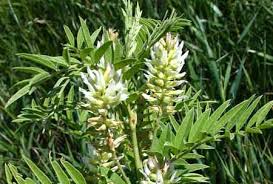
Three species of serviceberry are native to the West region, and are enjoyed for their nutritious and delicious flavor, similar to a blueberry. The bearberry fruit is also edible, raw or cooked. Native Americans often fried or dried the berries for edible use. The Okanogan-Colville cooked them with venison or salmon, dried them into cakes and enjoyed with salmon eggs. Another wild edible is Valerian. The root is usually cooked and requires a long steaming; the Indians would slow-bake it for two day until dry. The whole plant, but especially the root, is antispasmodic, hypnotic, sedative, stimulant, urine-inducing, and has agents that relieve and remove gas from the digestive system, and powerful agents that affect, strengthen, or calm the nerves.
Wild Licorice also provides edible roots that can be eaten raw or cooked. They are long, sweet and fleshy, and when slow roasted are said to taste like sweet potatoes. These roots were used for food by the Montana and Northwest Indians. They can also be used as a flavoring in foods or chewed raw, making an excellent tooth cleaner. Blackfoot Indians used wild licorice leaves to make poultices for earaches. All parts of the plant are medicinal, but the roots are the most active part and are said to have been used for toothache, fever and to strengthen the voice for singing by the Keres and Bannock Indians.
Northwest
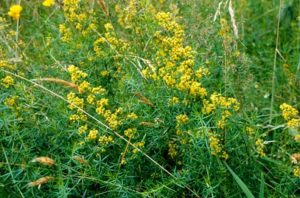 In the Northwest, several wild edibles are available. One example is Bedstraw (Galium Spp), a good source of vitamin C. It is recommended to harvest Bedstraw before fruiting and tastes best when cooked. Bitterroot (Lewisia Rediviva) is known for its root which is edible when cooked, has a very bitter taste and is best when gathered just before the flower blooms. The root is prepared by removing the dark outer layer and the orange-red core and can be dried for storage. Catnip (Nepeta Cataria) has young leaves which are edible raw. The older leaves are more suitable for seasoning a dish. Mountain Sorrel (Oxyria Digyna) has edible leaves when raw or cooked. The leaves can be chopped into a water-sugar mixture to make a lemonade-like drink. Sorrel is another plant in this region, and was traditionally boiled with berries or salmon roe and poured into thin cakes. Miner’s Lettuce (Montia Perfoliata) is completely edible, including the roots. This plant grows in moist shaded woods and fields. Salsify or Oyster Plant (Tragopogon Spp.) is a unique wild, native plant whose roots are edible raw. They can be dried and ground and surprisingly roasted as a coffee substitute. The young leaves can be eaten raw. Wild Licorice (Glycyrrhiza Lepidota rhizome) is also edible raw. The rhizome was traditionally roasted in coals, pounded to remove tough fibers from the center, and then enjoyed. This plant grows near water in moist, well-drained sites in plains and foothills.
In the Northwest, several wild edibles are available. One example is Bedstraw (Galium Spp), a good source of vitamin C. It is recommended to harvest Bedstraw before fruiting and tastes best when cooked. Bitterroot (Lewisia Rediviva) is known for its root which is edible when cooked, has a very bitter taste and is best when gathered just before the flower blooms. The root is prepared by removing the dark outer layer and the orange-red core and can be dried for storage. Catnip (Nepeta Cataria) has young leaves which are edible raw. The older leaves are more suitable for seasoning a dish. Mountain Sorrel (Oxyria Digyna) has edible leaves when raw or cooked. The leaves can be chopped into a water-sugar mixture to make a lemonade-like drink. Sorrel is another plant in this region, and was traditionally boiled with berries or salmon roe and poured into thin cakes. Miner’s Lettuce (Montia Perfoliata) is completely edible, including the roots. This plant grows in moist shaded woods and fields. Salsify or Oyster Plant (Tragopogon Spp.) is a unique wild, native plant whose roots are edible raw. They can be dried and ground and surprisingly roasted as a coffee substitute. The young leaves can be eaten raw. Wild Licorice (Glycyrrhiza Lepidota rhizome) is also edible raw. The rhizome was traditionally roasted in coals, pounded to remove tough fibers from the center, and then enjoyed. This plant grows near water in moist, well-drained sites in plains and foothills.
Northeast
Native Americans in New England formed settlements where they cultivated fruits and maintained orchards, as well as small crops of maize, squash and beans. It is thought that they also foraged for a variety of woodland mushrooms. Jerusalem Artichoke(Helianthus tuberosus) is one of the best known wild natives of this region. It is the edible tubers, which form along the plant’s underground roots, which can be cooked like potatoes. Groundnut (Apios americana) is a twining perennial vine in the pea family. Dusky-pinkish/brown typical pea flowers turn into edible beans, but it’s the crunchy tuberous “nuts” that form on the roots (similar to peanuts) that are the best reason to seek out this plant. A common name for groundnut is Indian Potato, suggesting that this was an important staple of the Native American diet. Wild leek/ramps (Allium tricoccum) are strongly flavored bulbs which are smaller than domesticated onions. Ramps will grow anywhere that receives springtime moisture. Minty-flavored Checkerberries were mostly used by Native Americans for brewing a medicinal tea, but they are also edible and can be used in baking. Ostrich Fern “Fiddleheads” (Matteuccia struthiopteris var. pensylvanica) are picked when the heads are tightly curled around April. The flavor and texture is similar to asparagus spears, and fiddleheads can be eaten raw, steamed, boiled, or sautéed. Ostrich fern grows on the edges of swamps, streams and rivers, often in limestone.
Organizations throughout the nation are joining with a mission to save native, heirloom varieties. One such effort is being conducted by Fred Wiseman who started Seeds of Renewal in Vermont. His goal is to assist and encourage the Abenaki tradition of seed saving and indigenous gardening by helping to track down rare or long-lost seeds native to northern New England. Wiseman quickly discovered, after talking to Abenaki farmers, that there were a few native-origin crop varieties still being grown locally, some of which were extremely endangered. By the 2013 spring planting season, 14 crop varieties that had a possibility of ancient Native origin in northern New England had been discovered. Examples include sunflower, ground cherry, Jerusalem artichoke, White Scallop Squash, and several bean and corn varieties.
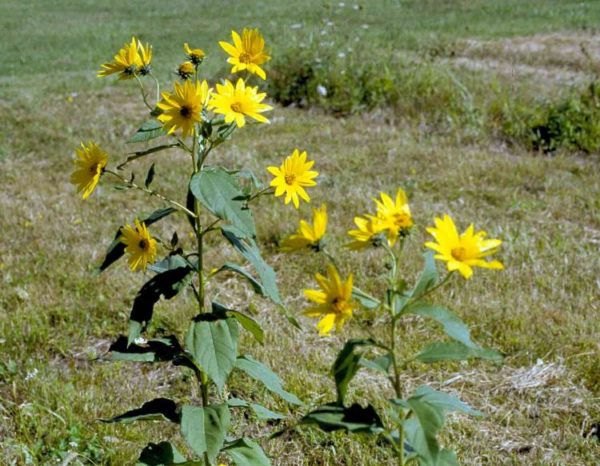
Educational institutes are another means for introducing knowledge about edible wilds and wilderness survival. Located in northern Maine is the Jack Mountain Bushcraft School where identifying wild edibles and learning how to properly harvest, prepare and store them for consumption is part of the curriculum. And yet other people harvest and process wild edible plants for sale. Jenna Rozelle of Twinflower Farm in Maine is one such pioneer. Foraging for wilds is Rozelle’s passion as well as business. Local restaurants and customers purchase wild, native edibles such as serviceberries, cattail hearts, chokecherries, sweet fern, wood sorrel, goldenrod, Valerian root, and coltsfoot leaf.
With a slightly more global reach is the Missouri Botanical Garden, one of the largest and most active botanical research institutes in the world. Currently, they are working to create a global model of sustainable development through botanical research programs. One program, Sacred Seeds, is a “network of sanctuaries preserving biodiversity and plant knowledge.” This is accomplished through living gardens containing locally important plants, focusing on medicinals, but including those of ceremonial, food, and craft value.
